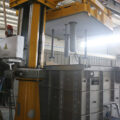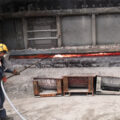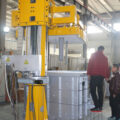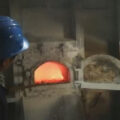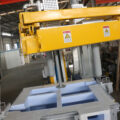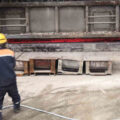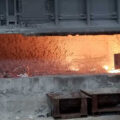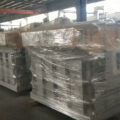Degassing process in aluminum can be divided into two situations: one is the hydrogen removal process that can form hydrogen bubbles; the other is the hydrogen removal process that cannot form hydrogen bubbles. The degassing process in aluminum that can form hydrogen bubbles can be roughly divided into three stages: first, the formation of bubbles, then the growth and floating of bubbles, and finally the escape of bubbles.

In aluminum alloy melts, the nucleation of bubbles must meet the following two conditions:
1) The hydrogen dissolved in the aluminum alloy melt is in a supersaturated state and has a precipitation pressure.
2) The gas pressure inside the bubble is greater than the external pressure acting on the bubble.
With the decrease of the hydrogen content in the aluminum alloy melt, the pressure of the hydrogen in the bubble becomes smaller. In a certain depth of aluminum alloy melt, bubbles will not be able to nucleate, and hydrogen removal can only rely on diffusion. Once the bubbles are formed, they will float up under the action of the density difference.
In the process of floating, on the one hand, the external pressure continues to decrease, on the other hand, hydrogen continues to diffuse into the bubble, which increases the number of hydrogen atoms in the bubble, resulting in an increase in bubble volume, that is, an increase in bubble radius. The bubbles in the aluminum alloy melt escape through the surface, and the rate of escape depends on the thickness of the oxide film present on the surface.
For the degassing process in aluminum that cannot form hydrogen bubbles, it mainly refers to the removal of hydrogen by forming other kinds of bubbles, such as rotating nitrogen or argon. The hydrogen removal kinetics process of the initial hydrogen-free bubble migration of the hydrogen in the aluminum alloy melt can be decomposed into the following five steps:
- Through convection and diffusion, the hydrogen in the aluminum alloy melt migrates to the gas-liquid interface between the aluminum liquid and the bubbles;
- The hydrogen atom changes from the dissolved state to the adsorbed state;
- The hydrogen atoms adsorbed at the gas-liquid interface interact with each other and combine to form hydrogen molecules;
- Desorption of hydrogen molecules from the gas-liquid interface;
- Hydrogen molecules diffuse into the gas phase and escape the molten aluminum as bubbles rise.





